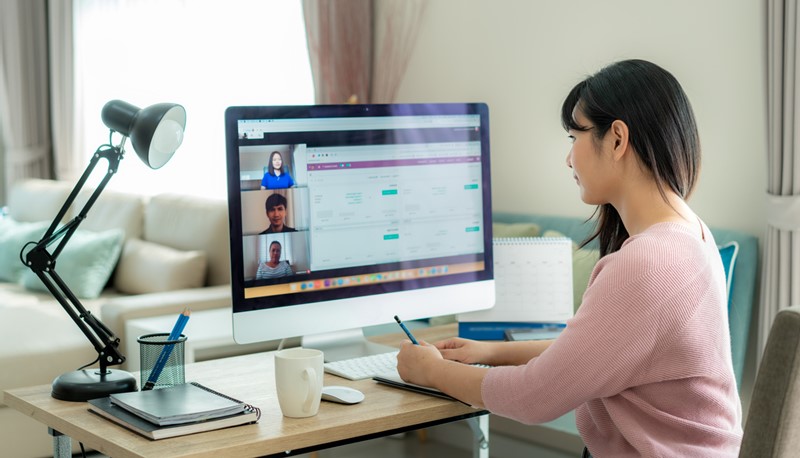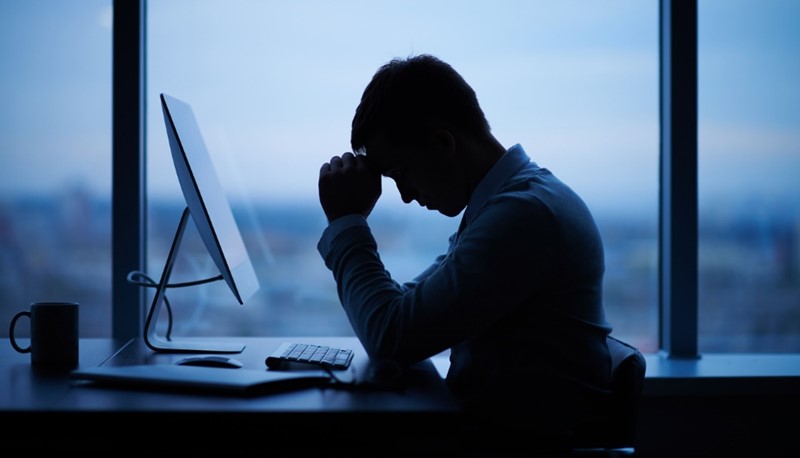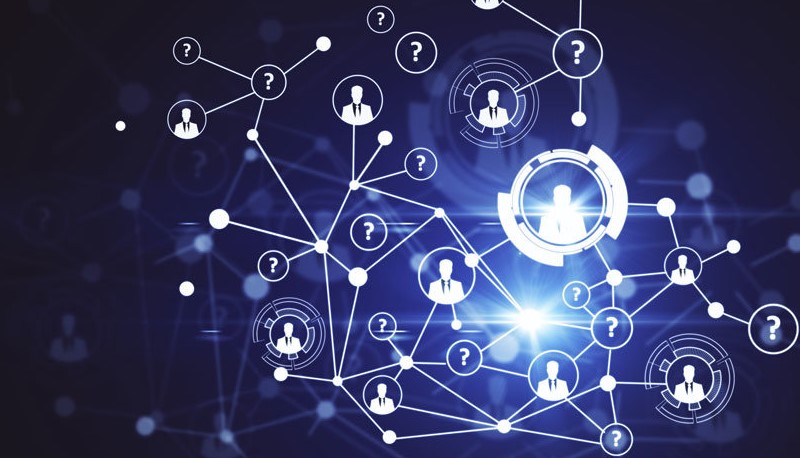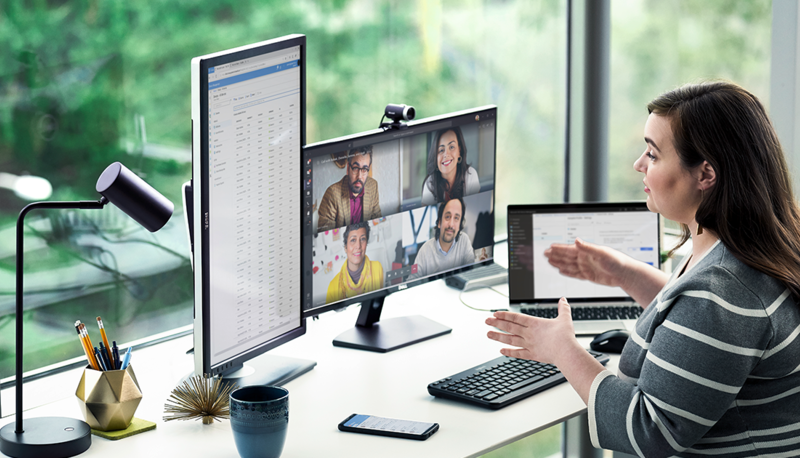Is this an end of five-day office a week? Chief People and Transformation Officer at Porter Novelli, and GTML™, Margaret-Ann Cole says the future is likely to see workweeks split between office and home. In conversation with TMI, Cole speaks about the upcoming shifts in talent management approaches and how talent managers can plan for return to work in 2021. Will the workplace and workforce remain distanced? Watch the full interview.

Welcome everybody to the Talent Management Institute's ‘2020 In Review’ series. Today we have the pleasure of speaking with Margaret-Ann Cole. She is the Chief People and Transformation Officer for Porter Novelli. Margaret-Ann, thank you so much for speaking with us today.
Margaret-Ann: Thank you! It's great to be here.
As an executive, what have been your biggest challenges in working from home?
Margaret-Ann: My personal biggest challenge is what most people are facing that is trying to find that divide between personal and work. Because you're in your home, it's easy to just get consumed by one or the other thing. That's my personal challenge. There's a lot of other things too. Thinking about your personal well-being, what you can take advantage of, not being able to go to the gym, not being able to get a break during the day – those are the things that everybody's facing, and I'm facing them as well.
Over the course of this year what do you think have been the biggest changes in talent management practices?
Margaret-Ann: The biggest change is clearly remote working. We are not going to go away from that anytime soon. And once people get used to it and really adopt it, that will probably be the biggest change. How you communicate and how you learn about one another, especially when you're onboarding, that's the second biggest change. Then managing in a remote environment. While people have worked remotely, they haven't worked remotely consistently at most organizations. So, this has been a big learning curve for a lot of folks.
What do you think are the most important factors in motivating a workforce during pandemic?
Margaret-Ann: Motivating the workforce is grounded in creating a safe environment for folks so that they feel safe, and they feel cared for. Once you let people know that it's okay for them not to have all the answers on how to juggle their work and life issues, it's okay for them to take a mental health day because the stress is too much, giving them the tools they need, making sure that the equipment works, making sure that there's a way that issues can get addressed quickly, allowing them software that makes their lives easier – those are all the things. Once you create that environment for people! Another thing that we did, and that helped motivate our people is that we used a typical wellness benefit to allow them to purchase certain things for their home office, like a standing desk at home, an ergonomically correct chair – all of that was really important to them and the fact that we were able to do that for folks really made a difference. The most important part that you could do for motivating people is caring for them, and letting them know that you care about them, and that this way they can trust you.
There's a recent survey that said the majority of Americans believe that workplaces need to do more than just implement work from home policies. You talked a little bit about the things you are doing. You also said that work from home is not going away. So, as we continue and as this continues to evolve, what shifts do you think are needed in talent management practices to meet that?
Margaret-Ann: Typically we started with this whole concept of work from home, but the reality is its flexible work arrangements. I read a quote by a Harvard business professor that said we're going to move from the five-day workweek to something that looks like 3-2-2. The idea that you potentially go to the office for three days, you work remotely for two days, and you have two days off. I think that is clearly going to be the direction that most companies go in. I know it's definitely the direction from all the surveys we've done with our employees, and we survey them continuously. Three days a week seems to be the magic number. I also think that we might see a move toward the four-day workweek – that people may work 40 hours in four days, so they could have three days off and not your traditional weekend, but more of being staggered. For working parents, in particular, we had to make sure that we were taking some real care. Because they were finding it difficult to get their work in during the day, so, they had to work creatively. They would split shifts, and some would work during the morning, while their spouse worked in the afternoon and at night, and then also augmenting with time in the weekends. So, I think in this whole idea of flexible work, where they work from shouldn’t matter. We had people working from Mexico, St. Lucia. They were getting their work done. Thus, the whole concept of flexible working is most important.
I think the other thing is teaching people to lead remotely. So, one of the things that people are struggling with is – how do I get the feel for another person when I'm looking at them in two dimensions? I'm leaning closer because I'm trying to look at the body language. I’m also trying to listen for different cues so that I’m much more on. Two things happen there – how do I train you to be able to work and manage in that environment, and the second thing is how do I allow myself to do that in a way that doesn't create more stress for me.
Then the whole concept of wellness is changing. The way we thought of benefits – like you have health and different perks that you offer – but now it's really about well-being. It's not just about your physical well-being; it's your mental well-being, it's your professional well-being, and it's professional from the perspective of an organization as well as for your personal career development. I think we're really looking at people in a much more holistic way. We always cared about people, but I think it’s much deeper because of the pandemic.
What do you think are the biggest hurdles going forward as this continues to evolve and as the talent management practices themselves continue to change?
Margaret-Ann: The big biggest hurdle is creating a sense of community in a remote environment. Because going forward, some people will be remote, some people will be in office, they will stagger their shifts, etc. So, how do you bring that group together, and create a sense of community because that is how you create that stickiness as an employer for your employees. So, I think making sure that we concentrate on creating that sense of community is the biggest challenge. And I don't think people realize how important it is, or what the implications are if you can't do it.
What are some things that you're doing now as of December of 2020 that maybe you weren't doing in December 2019, a year ago?
Margaret-Ann: A big thing is around communications. When the pandemic hit, we needed to give people a lot of information often. So, we actually created what we call casual conversations that was led by the executive team, and we did them every week, and we're still doing them. If you had told me last year that we would have that level of interaction across organization, I would have said no way! Because in the past we would do these global town halls, and they were very scripted; everybody had a part, and the slides were perfect. Now, what we do is casual. They're meant to be conversational. They're meant to allow people to share their voices. My entire team says I'm famous for saying – don't let perfect stand in the way of speed – because now we're making sure that we're doing things very quickly so that people can have results and we're not waiting for everything to be perfect before we make a move.
Let’s talk about communication a little bit more. Some surveys have come out recently that said communications from employers are more trusted than media communications, government communications, etc. As you were saying, it’s not just global, but the direct communication – the manager to employee communication; it all has been important in seemingly different ways this year. So, what role do you think HR has to play in ensuring effective business communications in a world where the lines between your work and personal life are so blurred?
Margaret-Ann: That's an interesting question, and it’s interesting to ask me. At Porter Novelli, we are all about helping organizations find their brand ambition, live it internally, and then tell the world about it. So, we believe that we help organizations close that ‘say-do gap’. We're a communications organization. If you're not living what you’re talking about in the press, then it hurts your brand. We also have done surveys where we found that employees trust their organizations and are relying on them more for information. So, all the information about return to work, and making sure people are healthy; we had to be in forefront of that because that's part of what we advise our clients.
In addition to that you have the whole concept of what's going on in the world and how do you share it. So, this year, probably many companies, ours included, actually gave people the election day. We gave them that day off because we wanted to support them in either going to the polls or supporting the polls, so they could share their voice.
You definitely need to walk the line on whatever you feel is really important and is critical to you as an organization. You have to be able to communicate that to your employees, but beyond that, you have to be able to communicate it to your stakeholders even beyond your employees. And it has to be authentic. That's the key to all communications. So, you can't say something in the press or to your stakeholders, if you're not also living it with your people; and that's the whole – say-do gap.
Do you feel that HR in business is still in crisis response mode, or has it stabilized?
Margaret-Ann: I do feel we're still in crisis mode. I don't know if anybody is an SNL fan, but there's Kate McKinnon, the Doctor we notice, and I think she broke character and said, “Yes, we see the light at the end of the tunnel!” The only thing is we're not at the end of the tunnel yet, but there's enough light for us to understand how bad things really are. So, I think that's kind of where we are, where everybody is, and it's one of the things I think we're going to continue to face. Folks are probably not going back to a semblance of normality until like spring. Even though there's the vaccine and people are hopeful, there's still a period of time that they have to be diligent. So, that's still going to create some stress.
I also think that people will have a little bit of post-traumatic stress syndrome affecting them. From how they worked in pace, I can tell you that our employees are probably more productive now than ever they have been in the past. Why is that? They're logging on earlier, they're staying on till later, they're not taking breaks because if you're in an office environment, and you want to go get a cup of coffee, if you run into somebody, you talk to them before you go back; now you're on your PC focused for a good portion of the day. So, that does create a certain amount of stress. I think HR professionals will continue to be concerned about people's well-being, their mental well-being, their physical well-being. And I don't think that's going to stop any time soon. So, we still have probably a good six months of very concentrated support that we have to give in more of a crisis mode than before.
What has been your biggest learning in 2020?
Margaret-Ann: I can't just say there's one. There are actually two. One is kind of just a confirmation of something that I always knew and believed, and that is you can never communicate enough. Even though you think you've communicated, over-communicated, you certainly haven’t. So, using every possible tool at your disposal – online, email, teams, communities, IM – everything you could do to communicate is important.
The second thing I learned is the unbelievable resiliency of the people who work with us, and I think the people in general. People have shown a strength that I did not necessarily think truly existed to the extent it does. And I am on a constant hopeful, pleased trajectory because I just can't believe how resilient people are. Even as stressed and as difficult as things can be, everybody finds the best thing. Everybody finds a way to make the best of it. That has really been what's held our organization together and I'm proud to be part of that.
Margaret-Ann, thank you so much for taking the time with us here today. We really appreciate it.
Margaret-Ann: Thank you! I appreciate being asked the questions.













CredBadge™ is a proprietary, secure, digital badging platform that provides for seamless authentication and verification of credentials across digital media worldwide.
CredBadge™ powered credentials ensure that professionals can showcase and verify their qualifications and credentials across all digital platforms, and at any time, across the planet.

Please enter the License Number/Unique Credential Code of the certificant. Results will be displayed if the person holds an active credential from TMI.